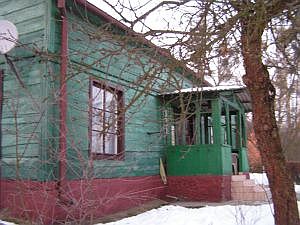|
gm. Dragacz, pow. świecki, woj. kujawsko-pomorskie

Grupa was a large gentry estate, remaining in hands of one family, (16th century - Kopicki, 17th and 18th century - Konarski), and at some point it was transformed into 3 separate villages: Górna Grupa, Dolna Grupa and Grupa, always linker however by one owner.
The Duch settled in the village before 1599. In 1676 the village belonged to Sebastian Czapski and then, as part of Grupa estate, to Konarski family. In 1669 it possessed 243 morgas and among the inhabitants there was a shoemaker. In 1676 the village, together with the Grupa manor, the mill, Dolna Grupa and Fletnowo, had 235 inhabitants. On the turn of 17th and 18th century the village belonged to the Bzowo parish. In 1719 and 1734 the tenancy contract for the village was issued by Stanisław Konarski.
In the Prussian partition the village found itself in the Świecie poviat, the Kwidzyń District, being part of the Bzowo Catholic parish. In 1773 in the village there were 27 homesteads with 137 inhabitants, including 14 peasants and 1 craftsman. In 1799 the village belongs to Friedrich Ernst Horn. In 1854 an Evangelic parish is founded in the village with a church erected in 1863. In the south-western part of the village there was a Karolina settlement. In 1880 it possessed 2023 morgas, 54 buildings, 33 residential houses, 26 Catholics, 203 Evangelists. A linear village with visible manor complex situated 8km from the left bank of the Vistula, in the north-eastern part of the Świecie poviat. The main road, leading to Gdańsk, runs along the north-south line.
Historic monuments in the village: the St. Theresa of Baby Jesus church, brick, modernist, dating from the twenties of the 20th century; a manor and park complex and one wooden homestead.
 No. 54 - house built in the third quarter of the 19th century, with its ridge facing a road running parallel to the A1 road; located in the north-eastern part of the village. House not connected with farm buildings. The homestead has a dispersed layout. No. 54 - house built in the third quarter of the 19th century, with its ridge facing a road running parallel to the A1 road; located in the north-eastern part of the village. House not connected with farm buildings. The homestead has a dispersed layout.
The building is on the plan of a rectangle, double-bay with a hallway in the eastern bay. Kitchen in the western part. \'Black kitchen\' preserved in the middle axis. Entrance doors in eastern and The western elevations. Single-floor with a pointing sill, without cellar. Covered with a double-pitched roof. The loft has a residential and usable character. The northern elevation is bi-axial, unsymmetrical. The southern elevation is bi-axial, symmetrical. The eastern and western elevations are tri-axial, unsymmetrical.
The house rests on a brick and stone plinth, is made of wood and has a corner-notched structure. Northern wall has a log-post structure. Wooden floors, cement floor in the kitchen. Wooden ceiling, ceiled with boards. Pointing sill having a corner-notched structure. Collar beam roof truss. The roof is covered with asbestos cement. Wooden, double-cased, two-level windows in window-frames. Wooden, single-leaf doors having frame and panel structure. Piec kaflowy. Simple wooden straight-flight staircase.
SGKP, t. 2, Warszawa 1881, s. 874; H. Maercker, Eine polnische Starostei und ein preussischer Landrathkreis. Geschichte des Schwetzer Kreises 1466-1873, "Zeitschrift des Westpreussischen Geschichtvereins", H. 17-19, Danzig 1886-1888, s. 206-7; Słownik geograficzny Państwa Polskiego i ziem historycznie z Polską związanych,, red. S. Arnold, 1937, s. 1691; K. Ciesielska,, Osadnictwo "olęderskie" w Prusach Królewskich na Kujawach w świetle kontraktów osadniczych, "Studia i Materiały z dziejów Wielkopolski i Pomorza", t. 4, 1958, s. 223; K. Mikulski, Osadnictwo wiejskie woj. Pomorskiego od poł XVI do końca XVII wieku, Rocznik TNT, R. 86, Toruń 1994, z. 2, s. 175; Katalog zabytków województwa bydgoskiego, oprac. K. Parucka, E. Raczyńska-Mąkowska, Bydgoszcz 1997, s. 55; P. J. Klassen, Ojczyzna dla przybyszów, Wprowadzenie do historii mennonitów w Polsce i Prusach, Warszawa 2002, s. 42;(1604) Mikulski K., Zarys dziejów osadnictwa olęderskiego w Polsce, "Materiały do dziejów kultury i sztuki Bydgoszczy i regionu", Bydgoszcz 1996, z. 1, s. 107.
SGKP, t. 2, Warszawa 1881, s. 874; H. Maercker, Eine polnische Starostei und ein preussischer Landrathkreis. Geschichte des Schwetzer Kreises 1466-1873, "Zeitschrift des Westpreussischen Geschichtvereins", H. 17-19, Danzig 1886-1888, s. 206-7; Słownik geograficzny Państwa Polskiego i ziem historycznie z Polską związanych,, red. S. Arnold, 1937, s. 1691; K. Ciesielska,, Osadnictwo "olęderskie" w Prusach Królewskich na Kujawach w świetle kontraktów osadniczych, "Studia i Materiały z dziejów Wielkopolski i Pomorza", t. 4, 1958, s. 223; K. Mikulski, Osadnictwo wiejskie woj. Pomorskiego od poł XVI do końca XVII wieku, Rocznik TNT, R. 86, Toruń 1994, z. 2, s. 175; Katalog zabytków województwa bydgoskiego, oprac. K. Parucka, E. Raczyńska-Mąkowska, Bydgoszcz 1997, s. 55; P. J. Klassen, Ojczyzna dla przybyszów, Wprowadzenie do historii mennonitów w Polsce i Prusach, Warszawa 2002, s. 42;(1604) Mikulski K., Zarys dziejów osadnictwa olęderskiego w Polsce, "Materiały do dziejów kultury i sztuki Bydgoszczy i regionu", Bydgoszcz 1996, z. 1, s. 107.
|

 No. 54 - house built in the third quarter of the 19th century, with its ridge facing a road running parallel to the A1 road; located in the north-eastern part of the village. House not connected with farm buildings. The homestead has a dispersed layout.
No. 54 - house built in the third quarter of the 19th century, with its ridge facing a road running parallel to the A1 road; located in the north-eastern part of the village. House not connected with farm buildings. The homestead has a dispersed layout.